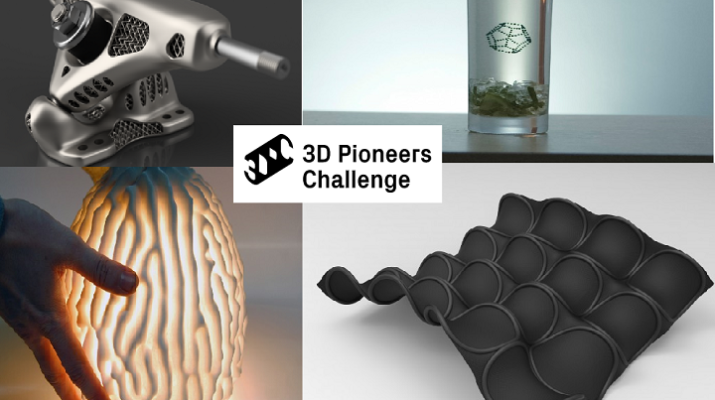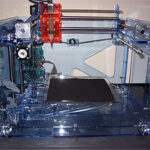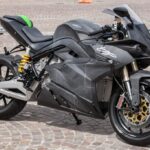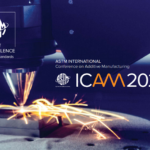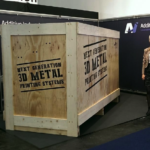
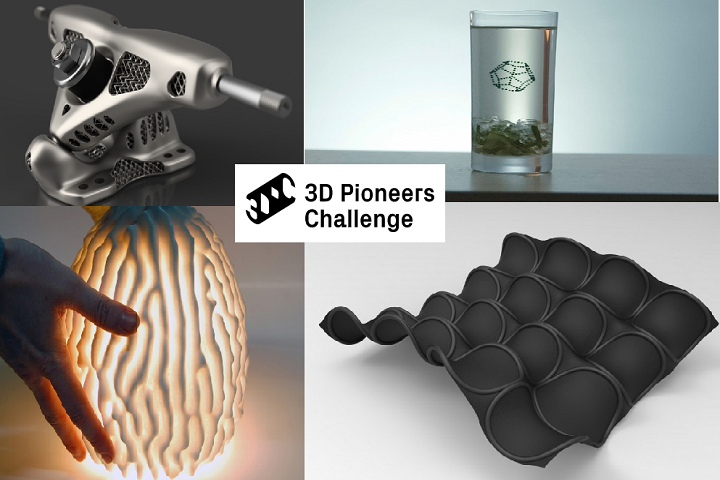
The Rapid.Tech trade show and conference, recently held at Messe Erfurt in Germany, was pretty busy – CRP Technology discussed the construction of the prototype for a 3D printed Parrot Bebop 2 drone, and there was a demonstration of a German RepRap X1000 3D printing a sailboat prototype, while Additive Industries announced a new technology partnership and Additive Elements was one of three winners at the event’s Startup Competition. But that wasn’t the only competition to take place at Rapid.Tech.
The 3D Pioneers Challenge (3DPC), organized by d.sign21, has been going on at Rapid.Tech + FabCon 3.D. since 2015. It’s open to students and young professionals who work in design or technical fields, and the automotive, medical, and research sectors, and targets designers who understand industry trends and are “breaking new ground in the field of 3D printing.”
The 3DPC challenge focuses on several different areas, including MedTech and FashionTech, Material, Design, and Event. This year, there were submissions from over 13 countries, and over the course of a multi-stage jury process, the winners were chosen during the event. The Thuringian Ministry for Economy, Science, and Digital Society donated a total of €15,000 to the winners, and designreport offered each winner subscriptions to its online magazine.
Phillip Manger’s Project T.O.S.T. (Topology Optimized Skateboard Trucks) was the Best Student Project, and also won the 3DPC’s Design category; Manger attends the Ernst-Abbe-Hochschule Jena University of Applied Sciences in Germany. In addition to €3,000 and the designreport subscription, Manger also won a MakerBot Replicator Mini+ 3D printer. Project T.O.S.T. offers new ways to achieve lightweight, 3D printed designs: by combining lattice and organic structures, as seen on his DH-skateboard trucks.
The jury of judges hilariously said, “It’s so lightweight, that even Marty McFly could hover on it.”
- Palmyra Rebuilt
- Salt Coral
In the Material challenge, Palmyra Rebuilt and Salt Coral, both by Eric Geboers and Matteo Baldassari with CONCR3DE, took home awards, and the jury was impressed with the team’s material research on locally sourced materials that have been abandoned in the world.

Benjamin Greimel from Austria took first place in the Event category with his Print A Drink, the first 3D printing process for drinks and other liquid foods. The jury said that this entry opened a discussion in chemical 3D printing, as it used materials that repel each other – similar to how oil repels water.
Bauhaus-Universitat Weimar was proud to have two winning entries from its art and design department in the challenge: Programmable Textiles in the FashionTech category, and RIG3D in the MedTech category. Product design student Ronny Haberer and former artistic assistant Patrick Bösch worked together on the Programmable Textiles idea, which puts a textile under tension and then uses 3D printing to partially reinforce it. The fabric will then contract in a specific shape once the tension is released. Bösch and Haberer developed an unwrapping software that actually simulates the deformation result.
“I am glad that I have the opportunity at the Bauhaus-Universität Weimar, To discuss current topics, such as the parameterized additive manufacturing,” said Haberer. “Through the competition it is possible to present our results to an international specialist audience.”
Product designer Niklas Haman won with his 3D printed RIG3D wrist orthosis, which can be customized to fit a person’s specific injury. Additionally, the RIG3D concept lets the doctor change the geometry of the orthosis without needing to be a 3D printing expert.
The jury said about RIG3D, “This is a great concept for using 3D printing technology for those who have no knowledge about it, the medical users.”
Another MedTech category winner was the Emydura cervical orthosis, developed by Mecuris GmbH in Germany. It’s the first 3D printed bespoke neck brace, and offers patients reliable, stable support and a lightweight, wearable device. Emydura project participants from Mecuris include:
- Jannis Breuninger
- Anja Fischer
- Felix Gundlack
- Manuel Opitz
- Clemens Rieth
- Carolin Taubmann
- Dr. Simon Weidert
- Juliane Weinzierl
To see the 3DPC Special Mention winner and other finalists, you can take a look at the challenge page. Discuss in the 3D Pioneers forum at 3DPB.com.
[Sources: 3DPC 2017, Bauhaus-Universitat Weimar / Images: 3DPC 2017]
When it comes to 3D real estate visualization in the USA, our service provides the perfect solution for bringing property listings to life. Through our platform, you can easily access cutting-edge 3D renderings that showcase your real estate projects in a way that attracts potential buyers and investors. Whether it's residential, commercial, or mixed-use properties, our team of experts uses advanced technology to create immersive visualizations that highlight the best features of your property, making it easier for clients to imagine the space as their own.
Through our website, you can quickly get high-quality 3D real estate visualizations that are tailored to your specific needs. With our help, you'll stand out in the competitive real estate market by offering potential buyers a realistic, interactive view of your property. Our efficient process ensures a fast turnaround time, while our attention to detail guarantees that every aspect of the property is represented accurately, giving you a powerful marketing tool to promote your real estate listings.


